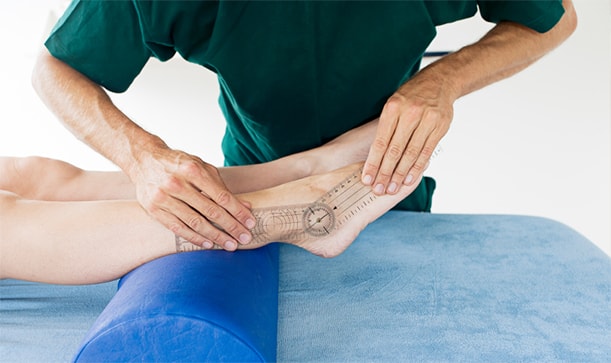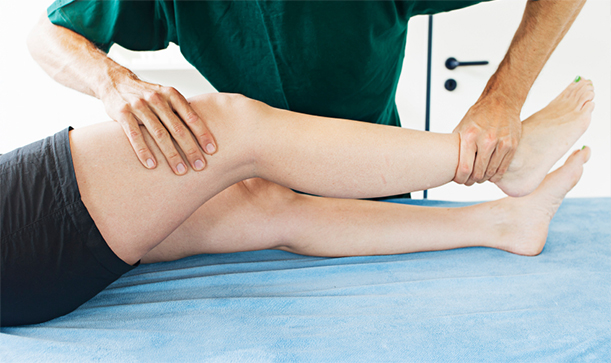CK Physiotherapy
AREAS COVERED
W7, W5, W13, Ealing, West London
57 Elthorne Avenue
Hanwell, W7 2JY
T: 020 8566 4113
M: 079 572 46185
E: info@ckphysio.co.uk
Location / Parking
We are situated in Hanwell, between Boston Manor Road and Northfields Avenue, south of the Uxbridge Road.57 Elthorne Avenue
Hanwell, W7 2JY
There are parking restrictions Mon - Fri 9-10am and 2-3pm. If you need a permit during this time please inform your therapist when you arrive. There are no parking restrictions at other times.
Opening Times
Please phone the number above during working hours to make an appointment. Our reception service will be happy to book your session.
London Underground / Bus Services
London Underground
10 min. walk from Boston Manor Tube Station.
15 min. walk from Northfields Tube Station.
Bus Service
E8, E3, E2, 207, 607, 83
Request Call Back
Our Blog
Work-From-Home Wrist Workouts: Preventing and Managing Carpal Tunnel Syndrome
By: admin Date: Mar 27th, 2023
The number of people working from home in the UK has increased significantly since the start of the Covid-19 pandemic in March 2020.
Although some companies have requested their staff to return to the office full time, flexible ‘hybrid working’ where employees split their working week between the office and their home location is becoming a popular solution.
Flexible working has many benefits. It can help you maintain a healthier work-life balance, reduce stress and burnout, and reduce the amount of time you spend commuting.
But the working practices for many people working from home are far from ideal.
We’re seeing an increase in the number of patients coming to us with work-related complaints such as wrist pain since they began working from home.
One of the common work-related complaints we treat at CK Physiotherapy is Carpal Tunnel Syndrome (CTS).
What is Carpal Tunnel Syndrome?
Carpal Tunnel Syndrome is a condition that affects the median nerve and causes wrist pain.
Although it is relatively common, it can be incredibly debilitating. Severe cases of CTS can make it difficult to perform everyday tasks.
The cause of CTS is pressure on your median nerve from repetitive overuse of your lower arm.
Your median nerve runs from the top of your forearm into your palm. It controls the sensation and movement of your fingers, forearm and wrist.
Repetitive motions of the wrist and lower arm can cause tissues surrounding your median nerve to inflame and swell.
This places pressure on the median nerve, which causes the symptoms of CTS.
CTS most commonly occurs in people who spend a lot of time making repetitive motions with their hands and lower arms.
Activities that most commonly trigger CTS include:
- Typing on a keyboard
- Excessive texting
- Knitting
- Gardening
- Playing piano
- Playing guitar
- Plating tennis, squash, or badminton
If you catch the condition in its early stages, it’s often possible to recover with non-surgical treatment such as manual therapy and Carpal Tunnel Syndrome exercises.
It’s worth noting that certain medical conditions such as diabetes and rheumatoid arthritis are known to cause inflammation and swelling in different areas of your body.
If you suffer from any kind of inflammatory condition, you should be extra vigilant of the early symptoms of CTS, as you have an increased likelihood of developing wrist pain through Carpal Tunnel Syndrome.
What are the symptoms of Carpal Tunnel Syndrome?
Every patient is unique, and the symptoms of CTS can vary from person to person.
But the most common early symptoms of CTS to look out for include:
- Mild pain in your hand and wrist
- Numbness in your hand and fingers
- A sense of tingling in the hand and fingers when you complete certain activities
If the condition is allowed to progress without correct diagnosis and treatment, symptoms can get more severe:
- An increase in wrist pain
- A decrease in grip strength
- Waking up with numb or tingling hands
- Difficulty performing daily tasks that involve your hands and fingers.
In the most severe cases of CTS, surgery is sometimes needed to address the problem.
So it’s important to begin treatment as soon as possible if you want to avoid the condition worsening, and overcome the condition with non-surgical methods.
For those with early symptoms of CTS, performing Carpal Tunnel Syndrome exercises for your wrists can help improve the condition and may help you avoid the need for surgery.
How can you prevent Carpal Tunnel Syndrome and keep your hands and wrists healthy?
When it comes to Carpal Tunnel Syndrome the old adage rings true - prevention is better than cure.
If you’re regularly using your lower arms and hands in a repetitive motion at work or in your day-to-day life, the following tips might help you prevent the symptoms of CTS.
Take regular breaks
Try to take a 10-15 minute break from your day-to-day activities every hour. This gives your muscles and tissues a chance to rest and helps you avoid wrist pain.
Loosen your grip
The tighter we grip, the more pressure we put on the tissues in our wrists and arms. If you can, try loosening your grip on the equipment you work with.
Review your workstation
Poor posture at work can increase the pressure and strain on muscles and tissues across your body – including your wrist.
Speak to a physiotherapist or occupational therapist about the best way to set up your workstation to achieve an effective posture and reduce pressure on your wrist.
Complete regular wrist exercises
By including hand and wrist exercises in your daily routine, you can help improve the strength and mobility in the tissues surrounding your median nerve. This can make them less likely to suffer from inflammation from overuse.
What are examples of Carpal Tunnel Syndrome exercises?
If you’re suffering from early symptoms of CTS, the best thing to do is to speak to your GP or a licensed physiotherapist.
They will be able to assess your condition and put together a personalised treatment plan that includes Carpal Tunnel Syndrome exercises and manual therapy tailored to your specific situation.
Some example wrist exercises include:
Prayer stretch
To get started with this wrist exercise, stand up straight, placing your palms together in front of your face as if you are praying. Your fingers should be pointing upwards.
Keeping your palms together, slowly lower your hands towards your waist until you start to feel a slight stretch in your lower arms.
Hold this position for around 15 seconds and repeat it 4 times.
Wrist flexor stretch
This is an easy Carpal Tunnel Syndrome exercise that physiotherapists often recommend for CTS.
Begin by holding your hand out flat, with your palm facing upwards.
Gradually bend your hand towards the floor, until you start to feel a slight pull around your wrist.
Carefully use your other hand to extend the stretch further, and hold this for around 20 seconds. Repeat 4 times.
The shake
This is another simple Carpal Tunnel Syndrome exercise that can help prevent and alleviate your symptoms. It helps to stop the median nerve from getting cramped.
All you need to do is shake your hands as if you’re trying to ‘air dry’ after washing them. Do this for around a minute, twice each day.
Wrist rotations
For this wrist exercise, place your arm out straight in front of you, and rotate your wrist clockwise for four full rotations.
Do this 4 times, before switching to anti-clockwise. Then switch arms.
Finger stretch
One of the easiest Carpal Tunnel Syndrome exercises!
Start by holding both of your arms out straight in front of you, with your hands slightly open and relaxed.
Stretch the fingers on both hands out as far as you can, as if you’re trying to cover as much surface area as you can with your palm. Hold this for 5-10 seconds and repeat it four times.
Know when to seek help
If you're starting to suffer from wrist pain or any of the early symptoms of Carpal Tunnel Syndrome, we’d recommend seeking help from a physiotherapist.
CTS is a condition that gets progressively worse if it isn’t correctly diagnosed and treated in time.
The earlier you’re able to seek help, the less severe the impact will be on your day-to-day life and the more likely you are to avoid the need for surgery.
A trained physiotherapist can help you manage the symptoms and advise on appropriate Carpal Tunnel Syndrome exercises and manual therapy so you’re able to regain full function in your hand and wrist.
CK Physiotherapy: Specialists in managing Carpal Tunnel Syndrome
At CK Physiotherapy, we understand the impact that Carpal Tunnel Syndrome can have on your everyday life.
Our team of licenced, chartered physiotherapists operate in the Ealing area and specialise in the prevention, diagnosis and treatment of repetitive strain injuries like CTS.
Get in touch with our friendly team to arrange a virtual initial assessment from the comfort of your own home.
After assessing your condition, one of our experts will draft a personalised treatment plan that includes tailored Carpal Tunnel Syndrome exercises and manual therapy to help you manage your condition.
But remember that CTS is a condition that gets progressively worse over time if it’s not effectively diagnosed and treated.
Book an appointment with CK Physiotherapy today through our easy online booking form and get started on your journey to recovery.
Further reading
Exercise advice: carpal tunnel syndrome. Retrieved from: https://www.csp.org.uk/
Working from home UK statistics 2023. Retrieved from: https://thehomeofficelife.com/
Carpal tunnel syndrome. Retrieved from: https://www.nhs.uk/
Carpal tunnel syndrome. Retrieved from: https://orthoinfo.aaos.org/
Carpal tunnel syndrome - Symptoms and causes. Retrieved from: https://www.mayoclinic.org/
9 Exercises for Carpal Tunnel that May Relieve Pain and Numbness. Retrieved from: https://www.webmd.com/
How To Prevent Carpal Tunnel Syndrome: 9 Hand & Wrist Exercises. Retrieved from: https://www.webmd.com/
3 Wrist Exercises to Treat Carpal Tunnel. Retrieved from: https://www.healthline.com/





